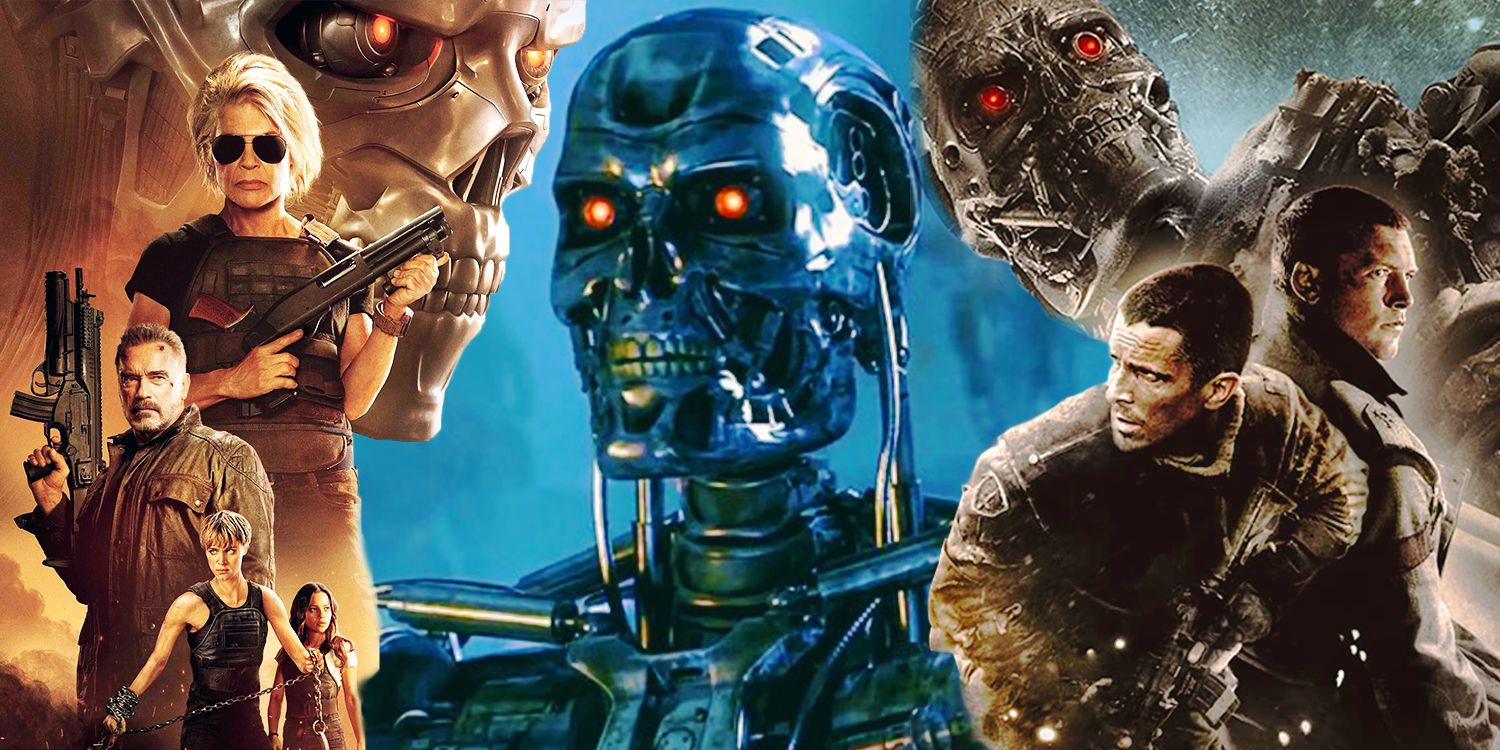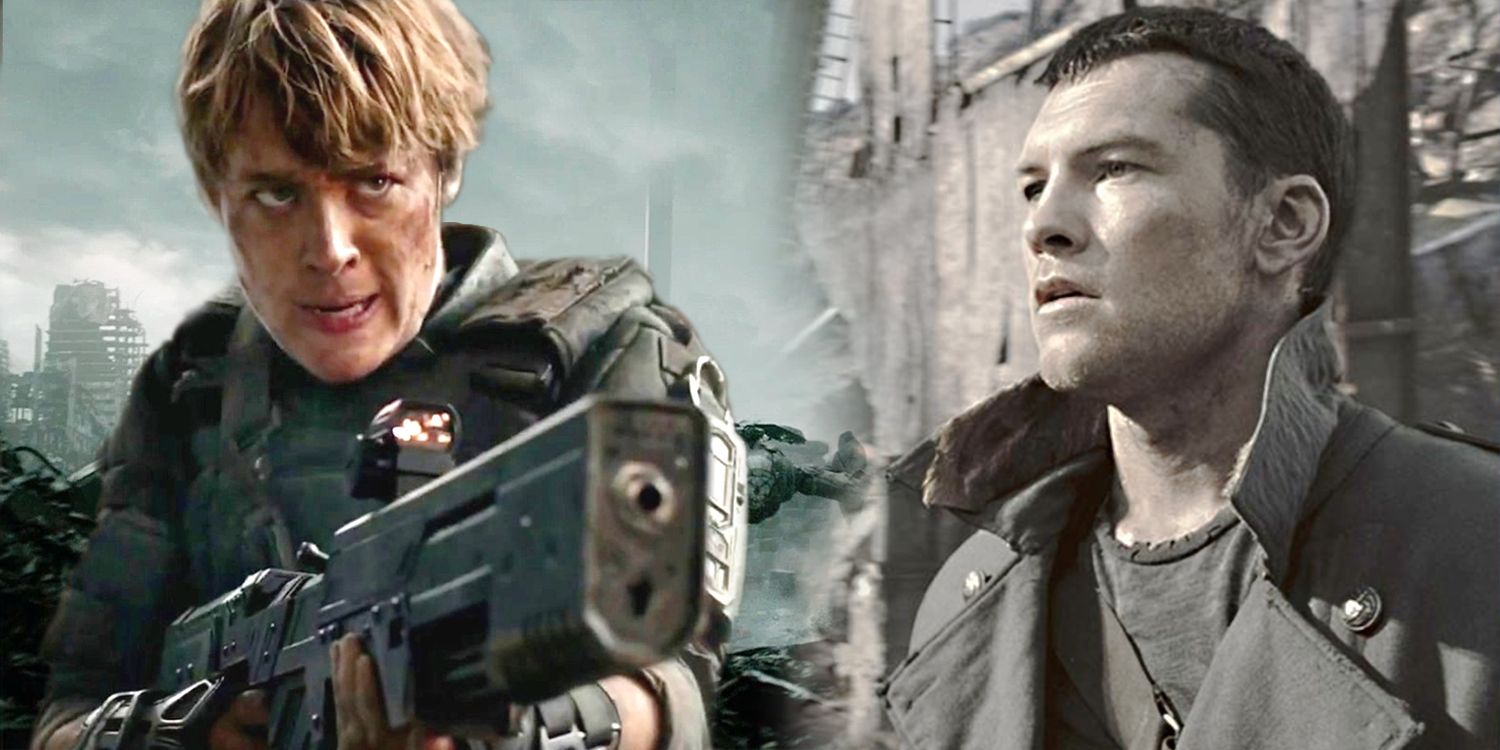Despite ignoring every sequel after the first two movies, Terminator: Dark Fate presents an apocalyptic future that resembles Terminator Salvation more than James Cameron's The Terminator. The original 1984 movie revolutionized science fiction with its bleak vision of a future dominated by an all-powerful AI and only a handful of people tasked with saving the world from total annihilation. To achieve it, the final battle would not be fought then, but in the past. The cyclical nature of its time-travel plot gave way to Terminator 2: Judgment Day, which ended in a high note after Sarah Connor (Linda Hamilton) and the second T-800 Terminator (Arnold Schwarzenegger) saved the future savior of the world, John Connor, (Edward Furlong) and seemingly averted Judgment Day from ever happening.
Terminator 3: Rise of the Machines brought Judgment Day regardless, and the ominous future that the original movie promised was adapted by Terminator Salvation into a grittier, more modernized version of the dystopian wasteland that Skynet inevitably rules over. As the only installment set in this part of the timeline, Terminator Salvation delivered on elements from the original movie, like the T-600 Terminator model and a mature John Connor (Christian Bale) who leads the Resistance while Skynet approaches the mass creation of its most important weapons, the T-800 Terminators. Unfortunately for this timeline, Terminator Genysis attempted to reboot the franchise and Dark Fate later chose to pick up from where Terminator 2 left off. However, the last installment still had some remnants of Terminator Salvation in its vision of the future.
Terminator: Dark Fate replaces the ominous Skynet with the more advanced but less efficient Legion - and with it, the roles of John Connor with a new savior, Dani Ramos (Natalia Reyes), and the time-traveling herald Kyle Reese (Michael Biehn) with Grace Harper (Mackenzie Davis), a cybernetically enhanced soldier who reveals the state of the future through her flashbacks. This new version of the war shows a wasteland far less populated by the machines, similarly to Salvation but contrary to the swarm of robots that the visions from the first Terminator displayed. In fact, the original Resistance seemed to live exclusively underground, only surfacing to battle them.
Both sequels lack the iconic T-800 Terminators - Salvation lacks them because they haven't been produced yet and Dark Fate because they're rendered obsolete by the Legion's "Rev" brand of robots. By the same token, neither of the two sequels give prominence to laser-based weaponry, a quintessential element of the original. Instead, the surviving humans in Salvation and Dark Fate rely on much less effective military firepower to fight the machines. Terminator Salvation and Terminator: Dark Fate also shared one major advancement in their technology that's central for the main plots of both movies. In Salvation, Marcus Wright (Sam Worthington) unknowingly volunteers to become a human-Terminator hybrid while on death row, designed by Skynet to infiltrate the Resistance and lure John Connor and Kyle Reese (Anton Yelchin) to their deaths. Connor eventually finds out, but he spares him. Wright's humanity overpowers Skynet's control and he sacrifices himself for the Resistance.
In Dark Fate, Dani saves Grace from a group of human survivors and raises her like a daughter. Grace is later wounded in a battle by Legion's machines and volunteers to be "augmented" into a cyborg before traveling back in time and saving Dani from a Rev-9 Terminator that Legion sends to kill her. The fact that all of these elements repeat themselves in unrelated timelines is due to the theme of predestination that prevails in the franchise and the studios' insistence on retreading old ground to create new sequels.
Terminator: Dark Fate may have departed from the ideas presented by Terminator Salvation, but it still chooses to approach the concept of the apocalyptic future in a less stylized version than the original The Terminator. This similarity can be read as a direct in-universe consequence of Dark Fate's decision to ignore every sequel after Terminator 2: Judgment Day, like a rewrite of the events that happened in a different timeline. In the end, fate in the Terminator franchise seems to be inescapable.


